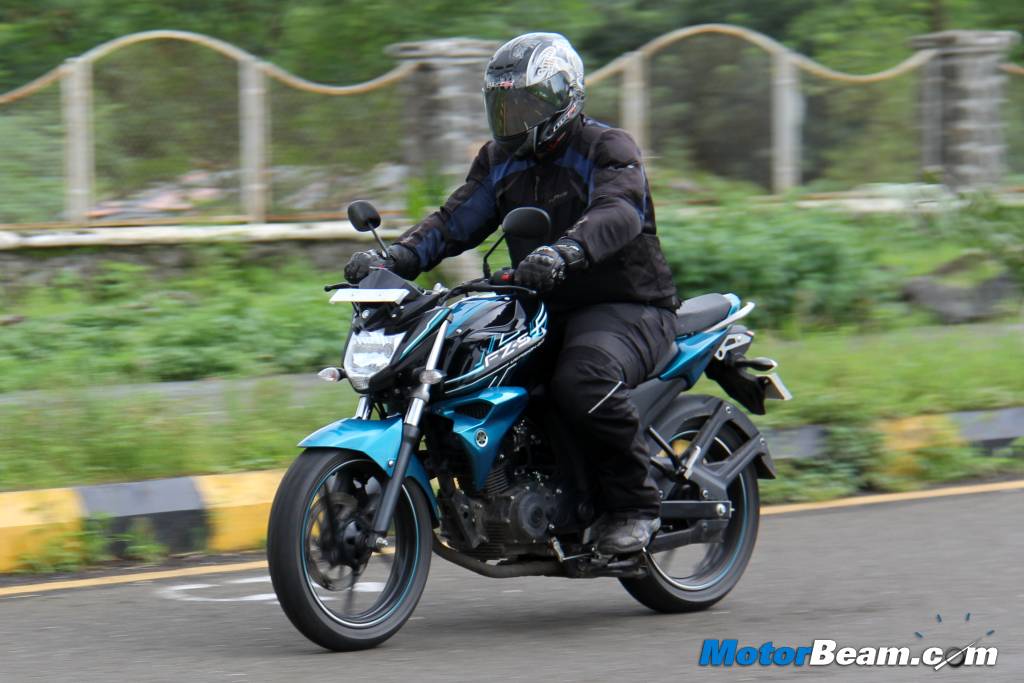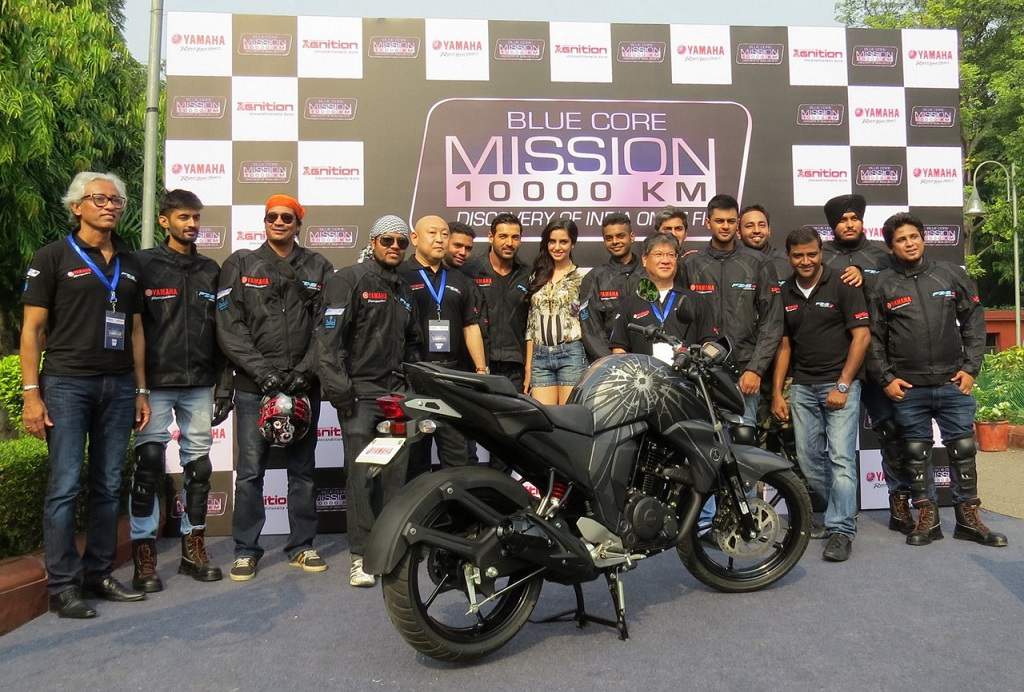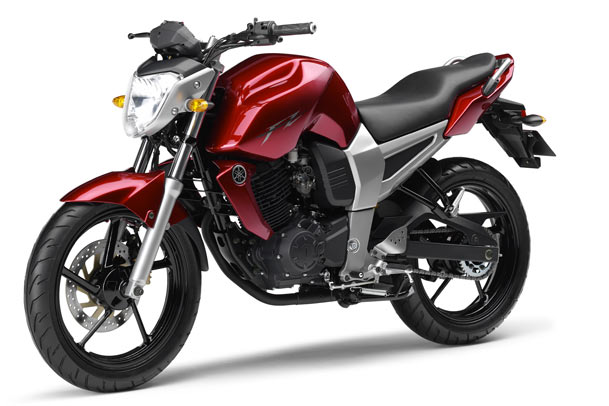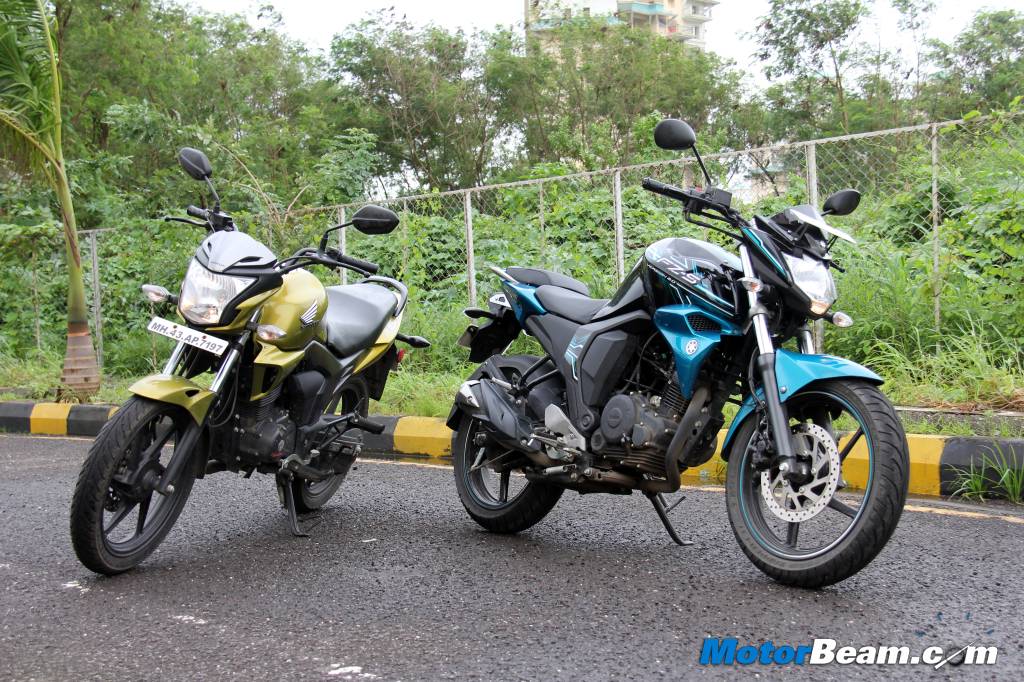
Shootout: Yamaha FZ FI V2.0 vs Honda CB Trigger
Price OTR Mumbai: Rs. 91,900/- (Yamaha FZ-S FI V2.0), Rs. 90,095/- (Honda CB Trigger CBS)
The Yamaha FZ FI V2.0 is back to challenge its arch rival yet again, the Honda CB Trigger
So here we are, back again, same place, with similar bikes from age old rivals who are arch enemies and are fighting in a country which is officially the most demanding place on earth when it comes to automobiles. In the blue corner we have the Yamaha FZ-S FI V2.0 with us, a bike which has become an icon on its own. This is a motorcycle just like the RX100 which proved itself and the company just enjoyed the heritage and profits which they got from this machine. It may not be the quickest and mad like its 2-stroke cousin but it is the four-stroke benchmark in its segment for the kind of practicality it offers with a hell lot of fun combined in a package by a company which never goes wrong with its products. In the golden corner, shining like a star and from the land of the rising sun, we have the Honda CB Trigger. A company which tries to make everyone happy at the same time and at every level but sometimes disappoints the enthusiast. However, when you start living with the package which Honda has tied up for you in a box, you start to appreciate it and mould yourself in it and have as much fun as you can. We put them together, back in the rains like how we did last time. Last time it was a close call for Yamaha but it still won, what happens this time? Let’s find out!
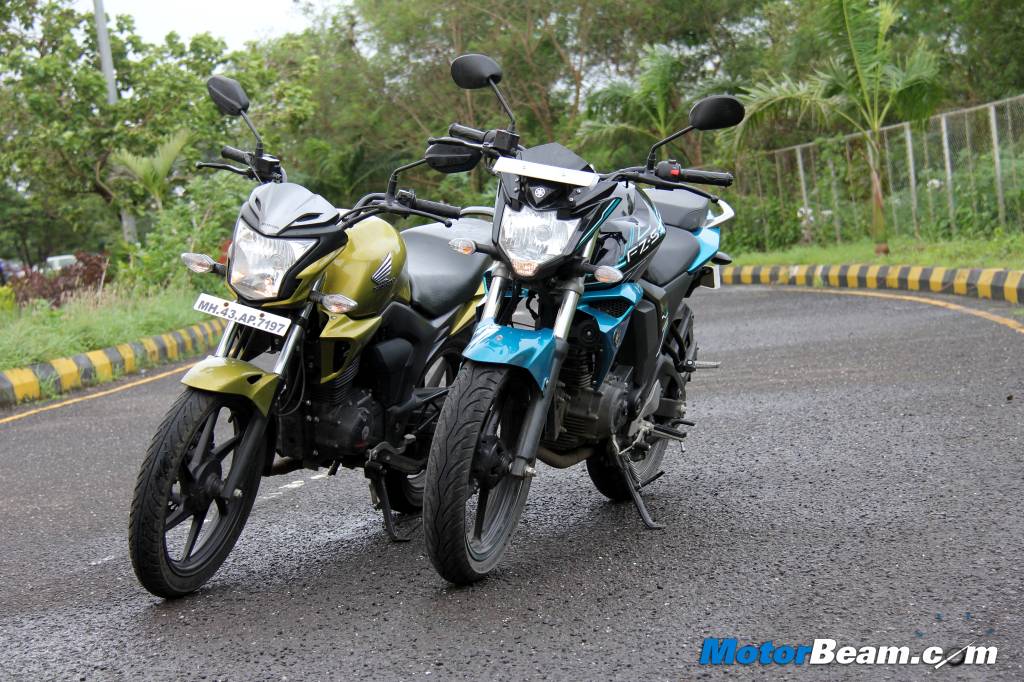
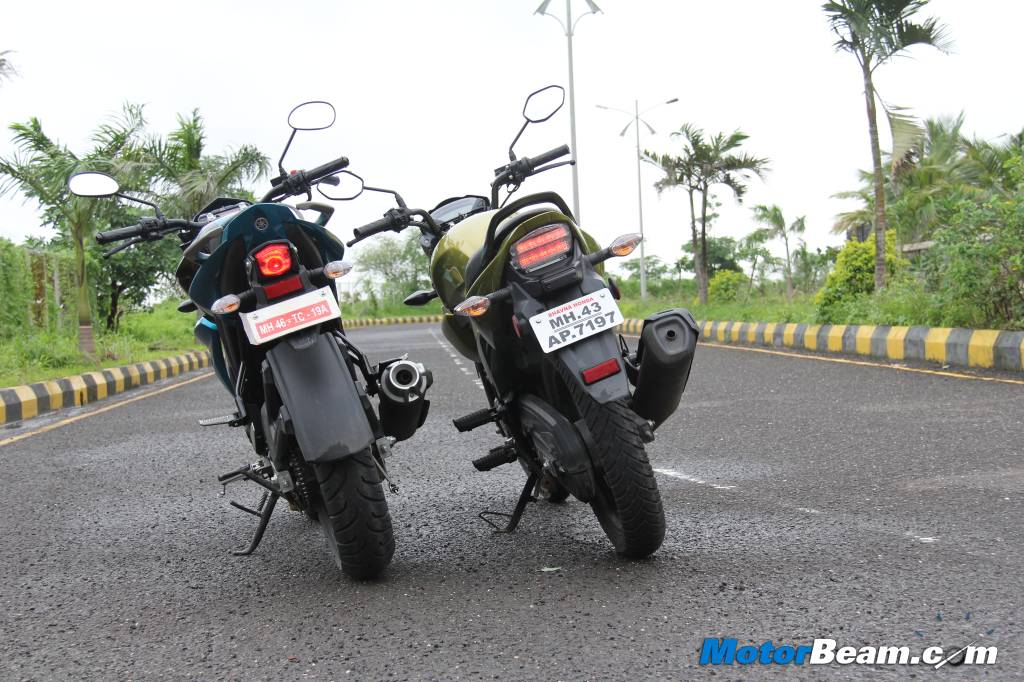
Front and rear styling award goes to the CB Trigger but the side and overall design of the FZ is more appealing
Styling – There is no doubt that the Yamaha FZ looks much more better with its macho tank but now the rest of the panels on the motorcycle including the exhaust have lost weight and have been toned down to give it the edgy yet muscular look at the same time. The Honda CB Trigger is following the contemporary styling like any other Honda and this new avatar Unicorn does not disappoint as the tail and headlight section looks way better than the FZ and individually too thanks to extremely well calibrated look of those LED tail lights. It is the side, front quarter and profile of the FZ which makes a person fall in love with it easily and this is where the Trigger loses marks. The Trigger manages to woo you by a well executed tail piece and cannon sized exhaust. On the FZ though, the fat forks and tyres on both ends lure the buyer who is looking for a sporty motorcycle which instantly seals the deal for him.
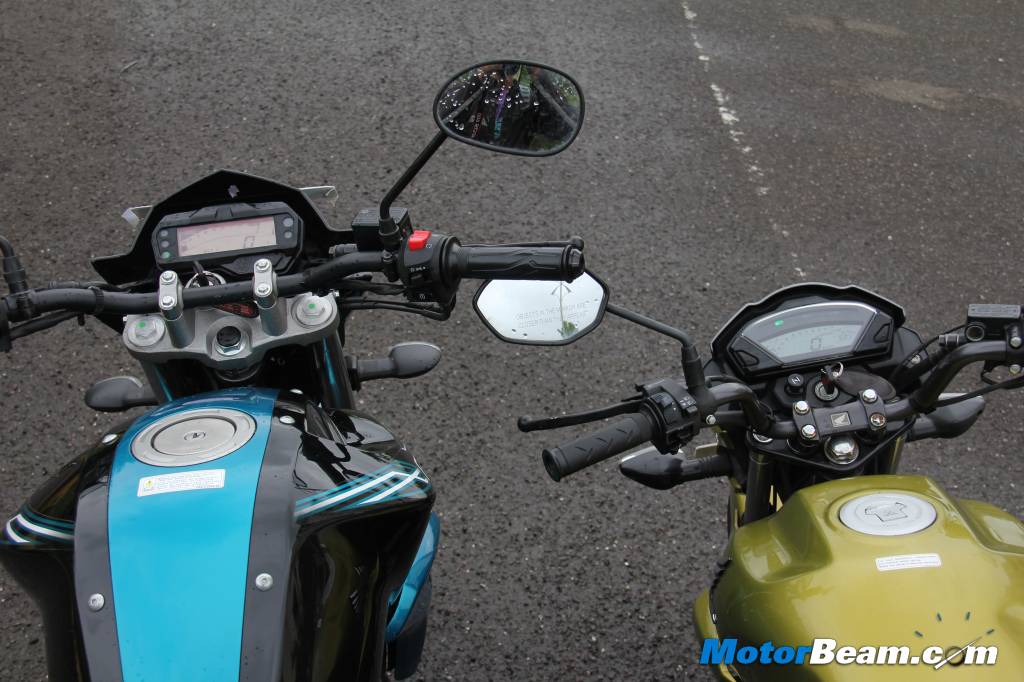
Instrument Cluster and Switchgear – While the FZ had an all digital meter since day one just like Trigger’s predecessor, both companies have gone ahead and improved them even more and in key areas. The Honda gets its inspiration from its stablemate, litre-class motorcycle, while Yamaha design is all new with the mobile tablet inspiration on both of them. However, the FZ misses out on goodies like two trips meters and a clock which the Honda has had since day one. Yamaha has given an Eco meter which comes on if you are under 70 km/hr, so it kind of makes up for it but not completely. When it comes to switches and feel of it, the Yamaha scores full marks for having best quality and an engine kill switch while the Honda scores nothing here for using that dated switchgear for more than 10-12 years (replace it on the CBR150R as well and you have customers ready to buy it). The Yamaha FZ gets DC lighting while the CB Trigger continues to have AC lighting, even at this price point. Overall, Yamaha wins this round.
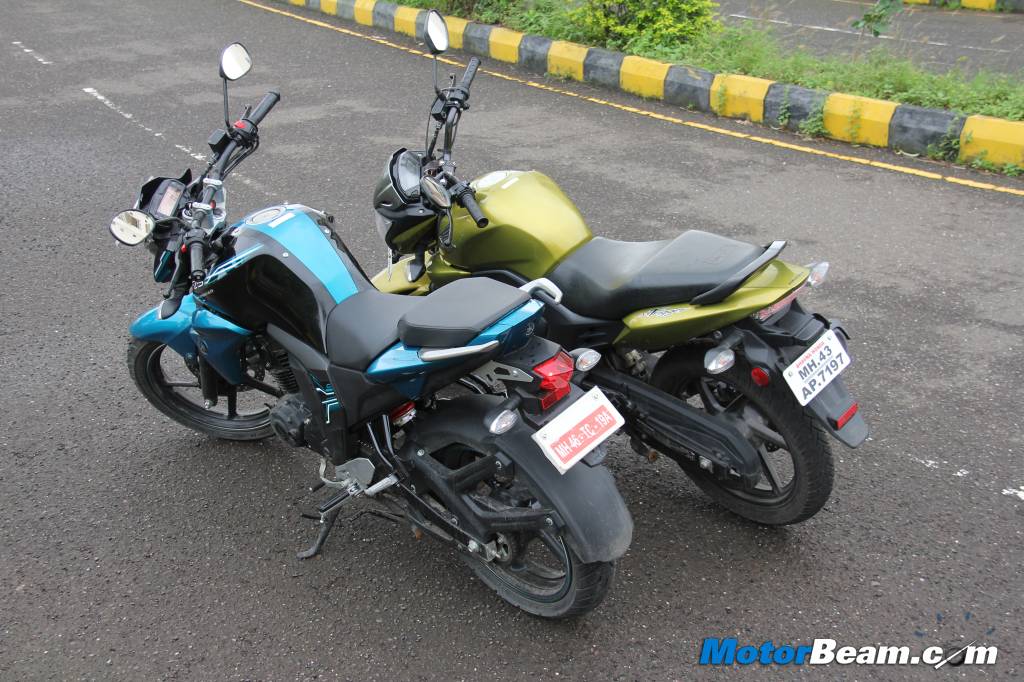
Ergonomics – The Yamaha FZ has the big bike riding position with rear seat footpegs and forward biased handlebar position. Meanwhile the Honda CB Trigger follows the front set commuter type footpegs which makes you sit right in the front, not good for enthusiastic riding but it makes it the most comfortable position of the lot when compared to the FZ for those extra long journeys. Earlier the Trigger scored high marks for pillion comfort as it was best in the segment but now Yamaha has made the rear seat much more accessible, comfortable and the pillion won’t be heard complaining after a long ride either. Mirrors are well positioned on both motorcycles and offer decent visibility even for the biggest riders. Overall both are evenly matched, having low seat height. Yamaha’s attention to detail and customer feedback priority levels just keep going higher and higher.
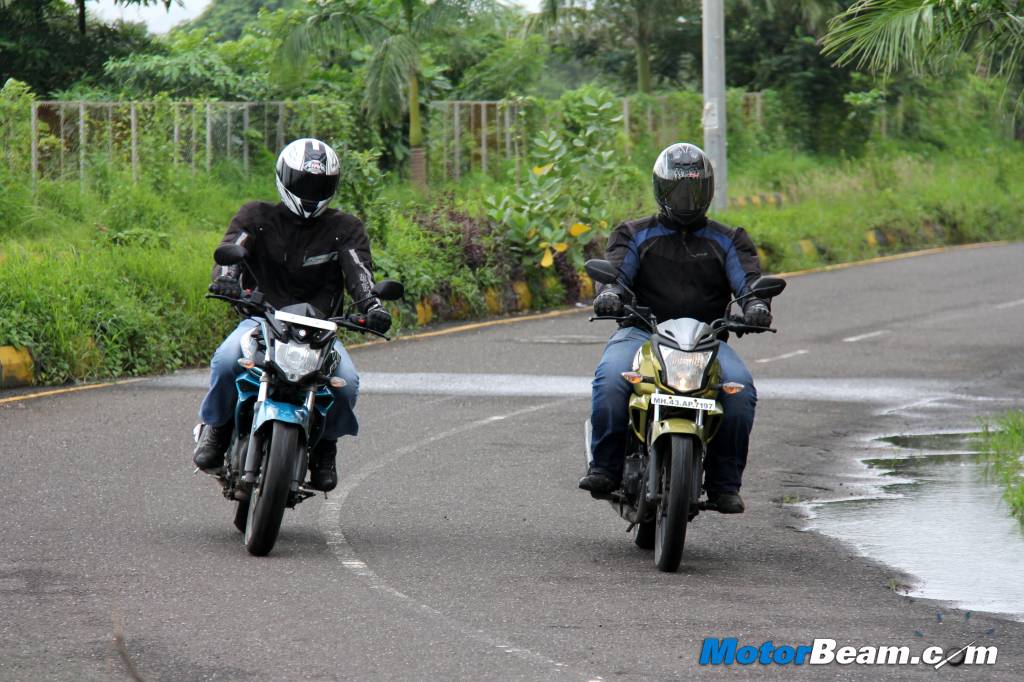
Performance – The twist is that both motorcycles are now powered by 149cc engines. The FZ V2 loses displacement, horsepower and torque which may sound blasphemy but Yamaha saves itself by saying it is quicker to all marks than the previous version due to clever gearing and sprocketing with fuel-injection helping too. All of this does matter because the CB Trigger and FZ are fighting here and the last time we tested the FZ, it was quicker to both the 60 km/hr and 100 km/hr mark. So has Yamaha continued to beat Honda in acceleration? Well the FZ V2 does 60 km/hr in 5.58 seconds and the Trigger does it in 6.02 seconds which means they are neck and neck but Yamaha wins the 100 km/hr battle by half a second (20.5) to the Honda which does it in 21.05 seconds. However, there is another twist to the package as the CB Trigger has the highest top speed on the speedometer and the VBOX by 3.2 km/hr as the FZ does 106 km/hr. Calculate the Trigger speed people, it’s simple.
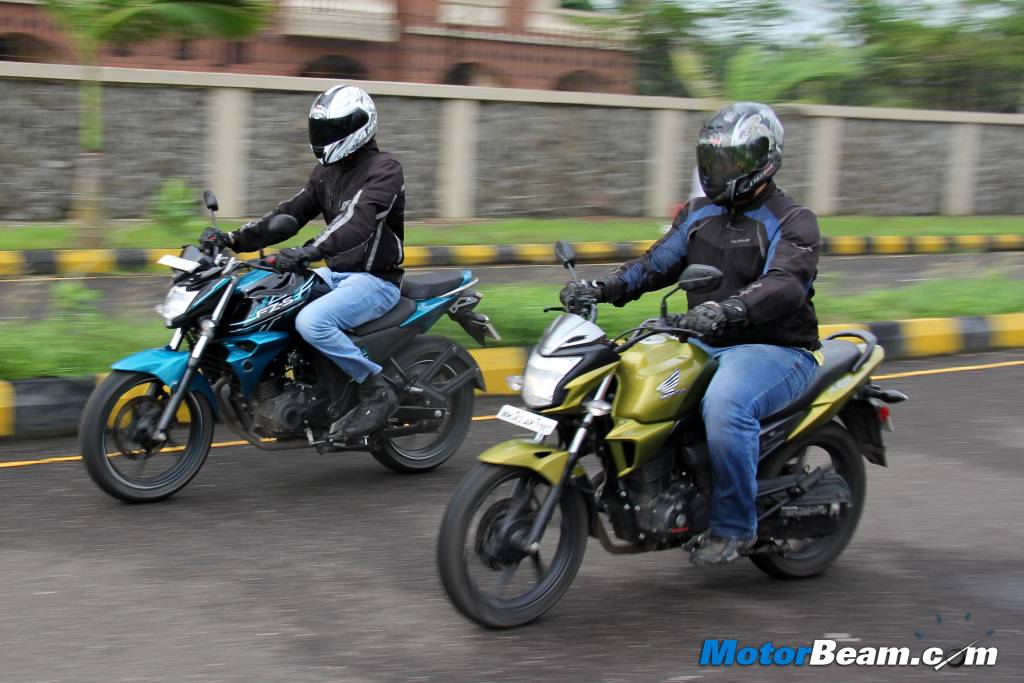
The fuel-injected motor offers excellent low and mid-end torque while the carburettor equipped CB Trigger offers mid and top-end power
In terms of powertrain balance, the Honda makes the best use of the engine by using taller gearing and the focus being on mid and top-end power but not compromising on the low-end thanks to that clever gearing. The FZ being a hooligan and the FI version makes that fact even more evident by just focusing on low and mid-end power with a larger sprocket proving our point. Top-end power on the FZ (whatever is left of it) comes as a bonus and takes more time than the Honda to achieve because of that fatter tyre and obviously the gearing that is slightly shorter than the Trigger. Launching them both of the line is particularly easy but you feel more at home with the Trigger. However with the FZ, you tame it in a couple of runs itself. Now we come to the crucial mileage numbers. Yamaha does 51 km/l in the city and 57 km/l on the highway while the Honda does 48 km/l in the city and 57 km/l on the highway. As we can see now, what was the trump card of Honda, is now matched by Yamaha (the company calls it Blue Core technology while Honda has HET which isn’t present on the Trigger). A major minus point for Yamaha has become its biggest plus point. Numbers can be higher on both bikes on the highway as our bikes were not in the best condition and were not ridden as sanely as a normal commuter would.
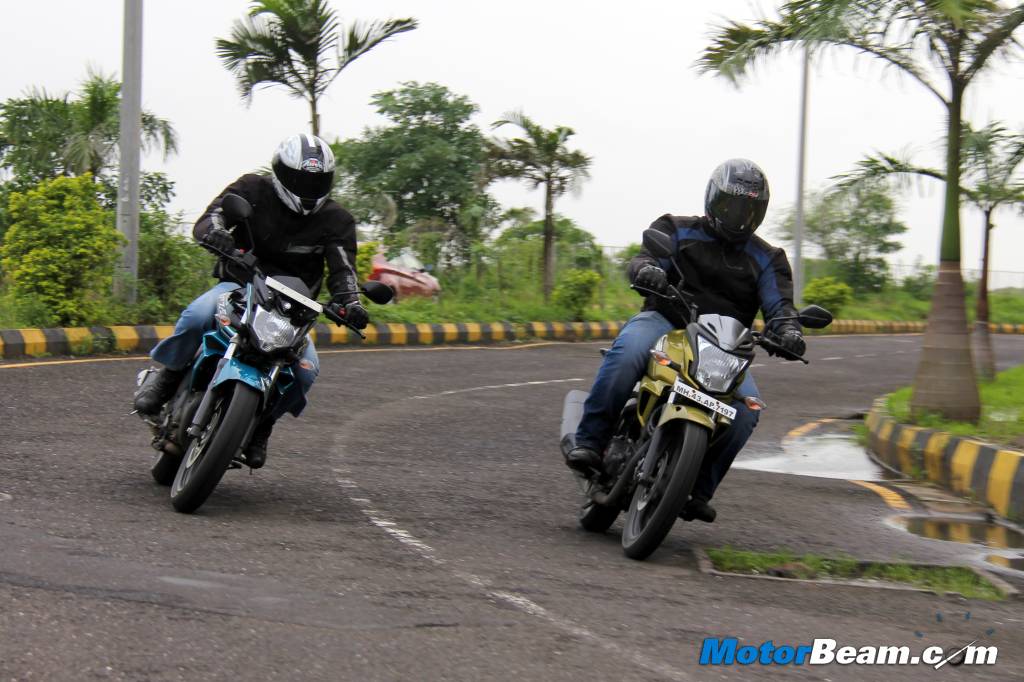
Riding Dynamics – Both these bikes use a single downtube chassis, monoshock at the rear and telescopic forks at the front. This is where the similarities end. The chassis, tyres and suspension on the FZ are beefier in look and feel than the Honda and they give that sense of confidence on the limit which is unmatched. The CB Trigger with slimmer tyres and suspension bits makes it super-duper agile thanks to forward biased weight of the rider and those front set footpegs. Yamaha has worked upon the chassis and it is all new from ground up which results in the chassis feeling even more eager than before thanks to the kerb weight being 5 kgs less than the Trigger (as if anybody complained or asked for the weight reduction). A small chink in the armour which FZ had over the Trigger is also gone but not by a huge margin. However, like we said, the confidence levels are so high, doing ludicrous direction changes with mid-corner planted-ness being simply unmatched. The Trigger feels well connected and goes around twisties quite well and combined with that high revving motor, it is also a lot of fun for people who believe in this particular idea.
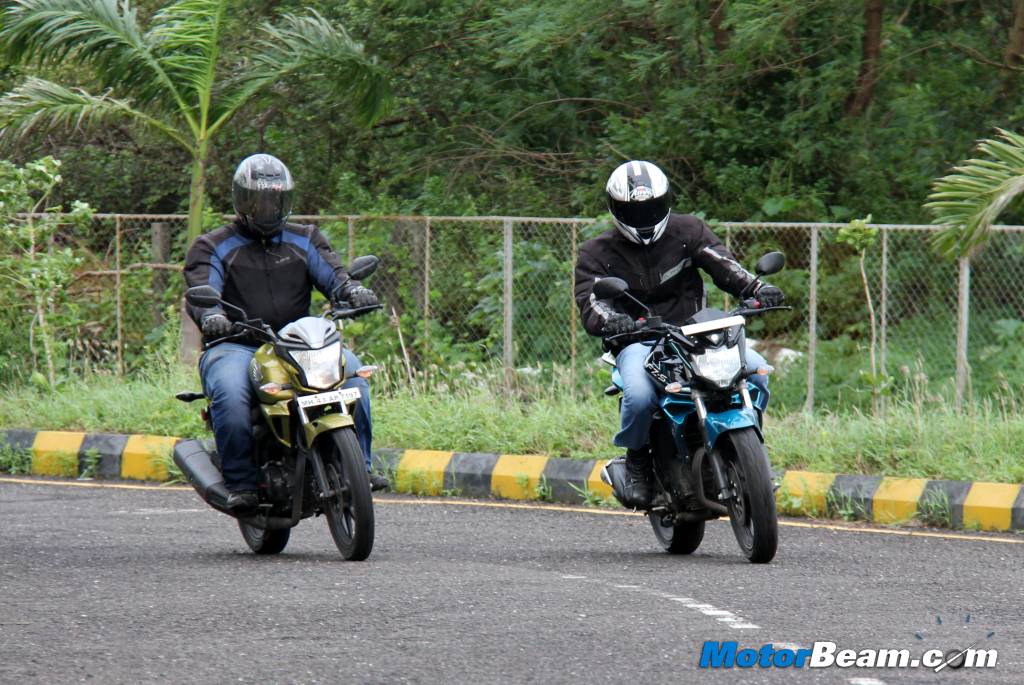
Both have great tyres but the one on the Yamaha FZ are technologically superior as they are fat radial tyres which give you a lot of mechanical grip (traction control not required, no really). However, the tyres on the Honda CB Trigger are MRF as well and they handle bad roads with aplomb, meanwhile the FZ gets a bit out of shape. There is no doubt that the brakes and brake options on the Trigger are far more better than the FZ. Since both are similarly priced (Trigger CBS variant) and the normal FZ FI, you are getting best in class brakes on the Trigger but now Yamaha offers FI at that price tag, hence all the effort for this comparison. Yamaha has not offered a rear disc as an option till now because it does not make sense to take a 150cc bike close to the Rs. 1 lakh price mark as there is already something waiting at that corner with 3 spark plugs.
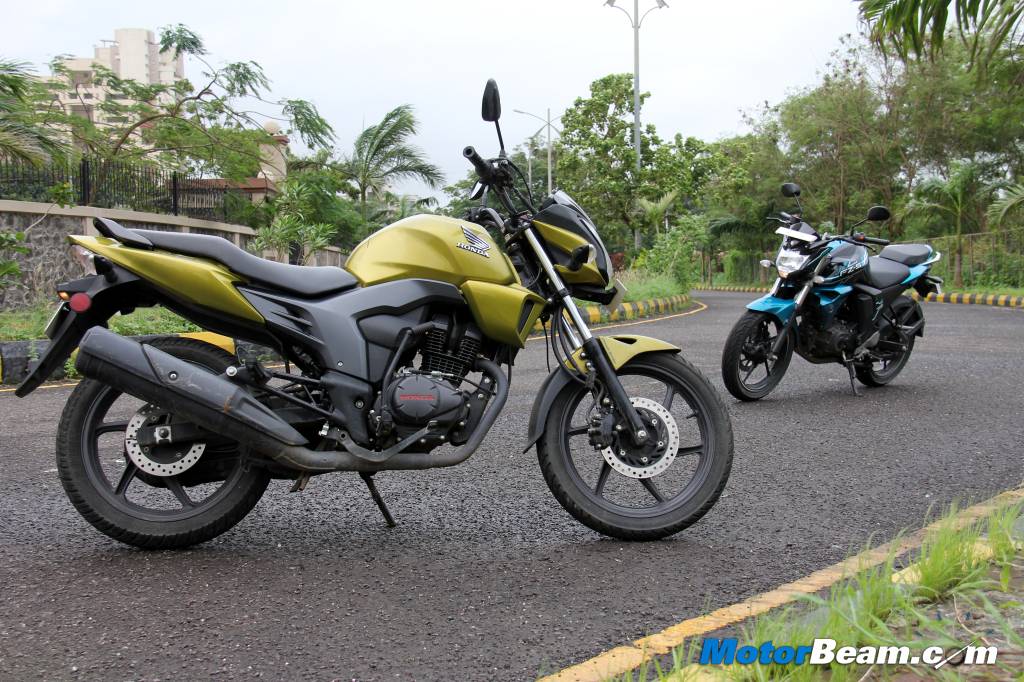
Verdict – So the last time the Yamaha won because it was way too much fun to ride and the value was high because the Fazer’s pricing is the same as the Honda CB Trigger. All you got on the Trigger was a small amount of extra goodies and better brakes but since the junta loves fairing and both were equally rewarding to ride, the Fazer won. This time it is the FZ FI vs the CB Trigger, which is head on, as both are naked bikes and while one offers a superior braking system, the other offer fuel-injection which enables you to extract each and every drop of fuel and maximise fuel efficiency as per your requirement. The FZ also has more than adequate stopping power. The Yamaha is just more fun to ride than before and pretty much serves value with the FI system but could have done with more value to the customer. The Yamaha looks better and as per our previous reports, everything except the FI system is easy and cheap to maintain. And after calculating every single aspect (including service where Yamaha is better than Honda), we declare the FZ FI V2.0 as the winner of this shootout as the only niggle which was the less km/l numbers have now shot up by a considerable margin. Was there any trouble in declaring the winner? Not at all! Yes Yamaha!
The Yamaha FZ FI V2.0 just becomes even more impressive as a package. The Honda CB Trigger is good value in lower variants but the FZ is for the enthusiast who looks for every single thing in his one bike and the Yamaha is that motorcycle.
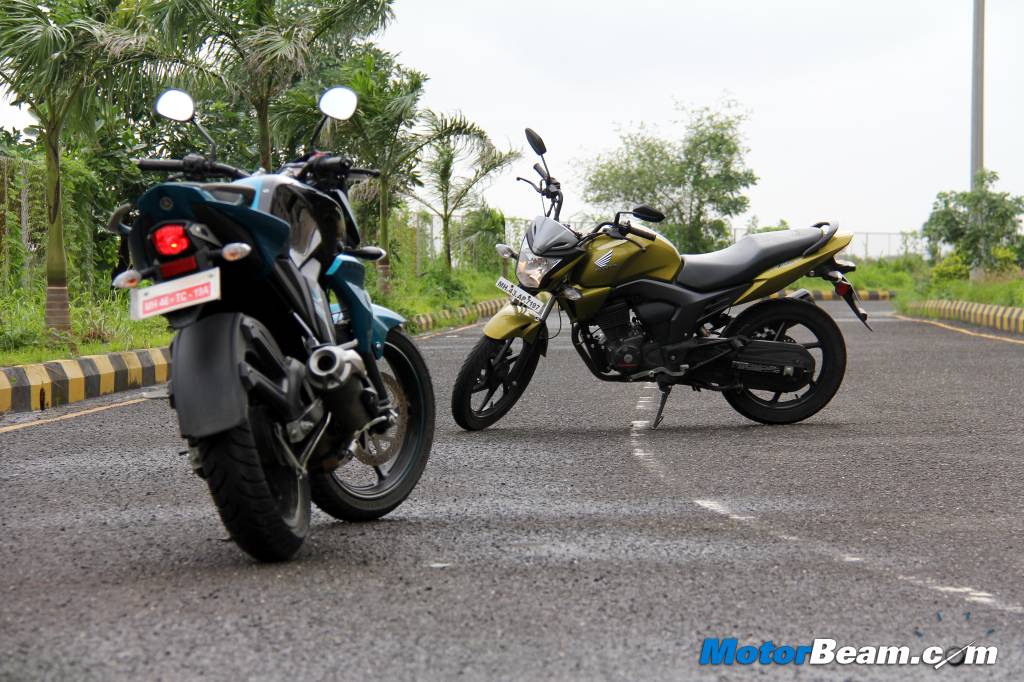
Further Reading –
Yamaha FZ FI V2.0 Review
Honda CB Trigger Review
Yamaha FZ V1 Long Term Review
Honda CB Trigger Long Term Review


